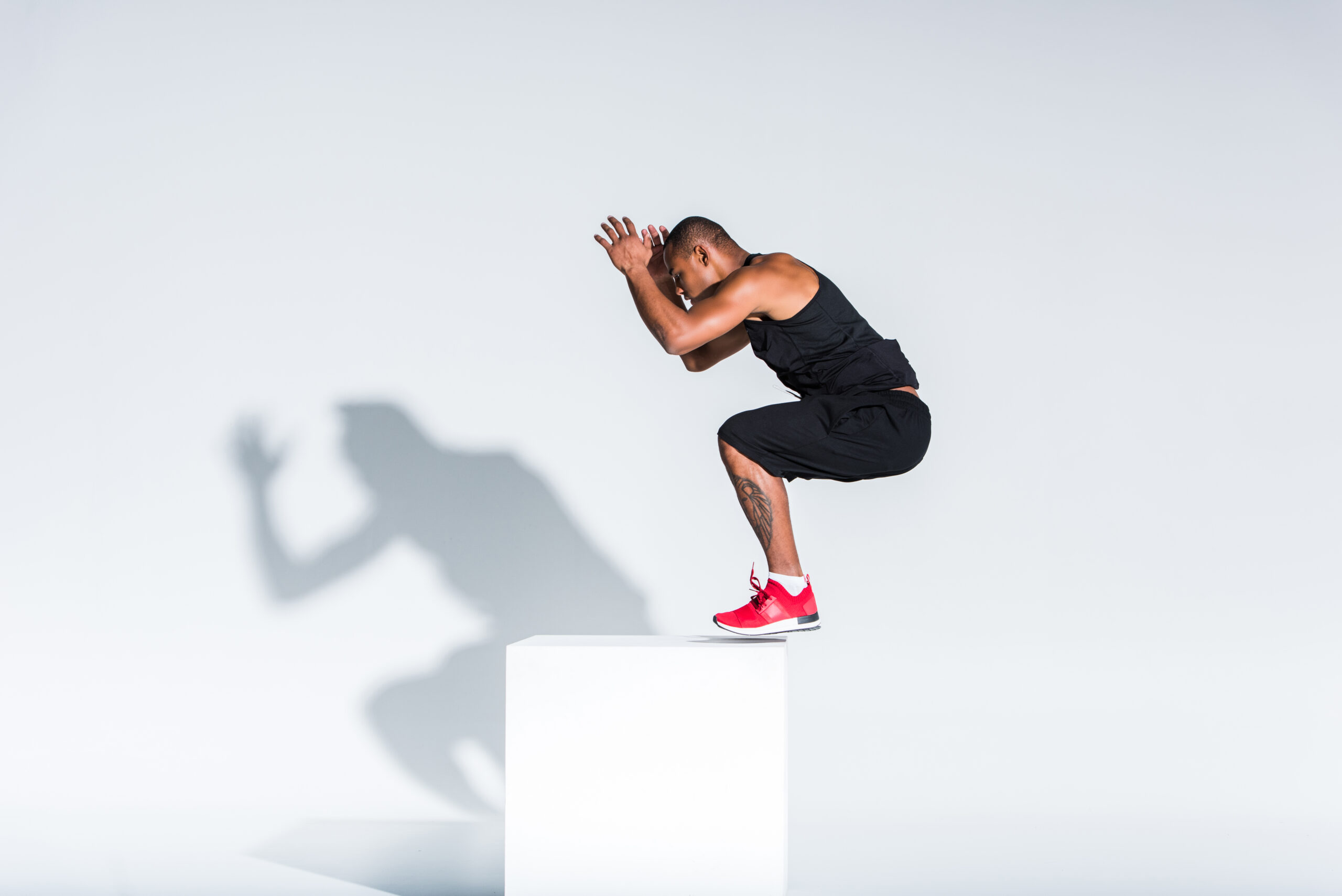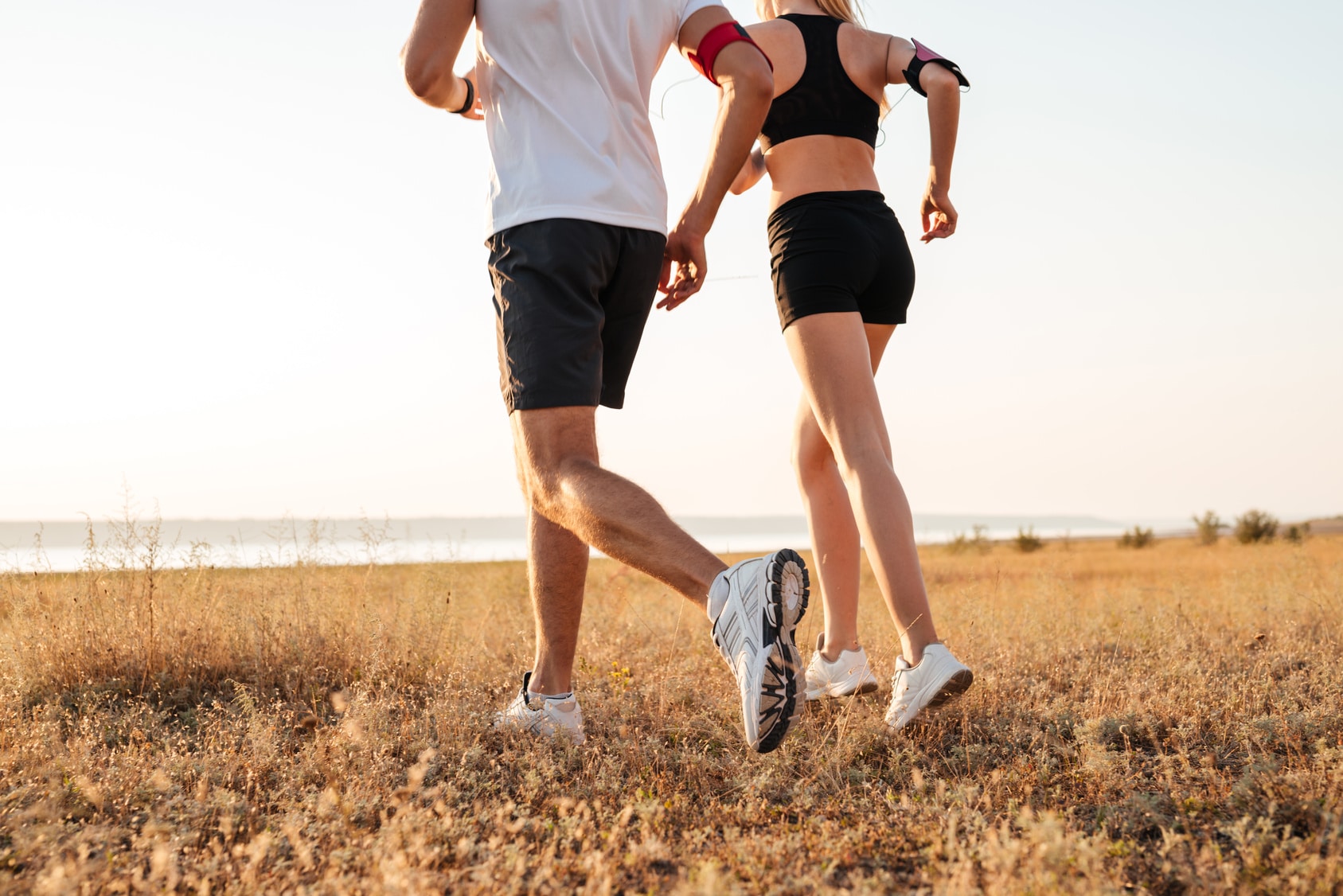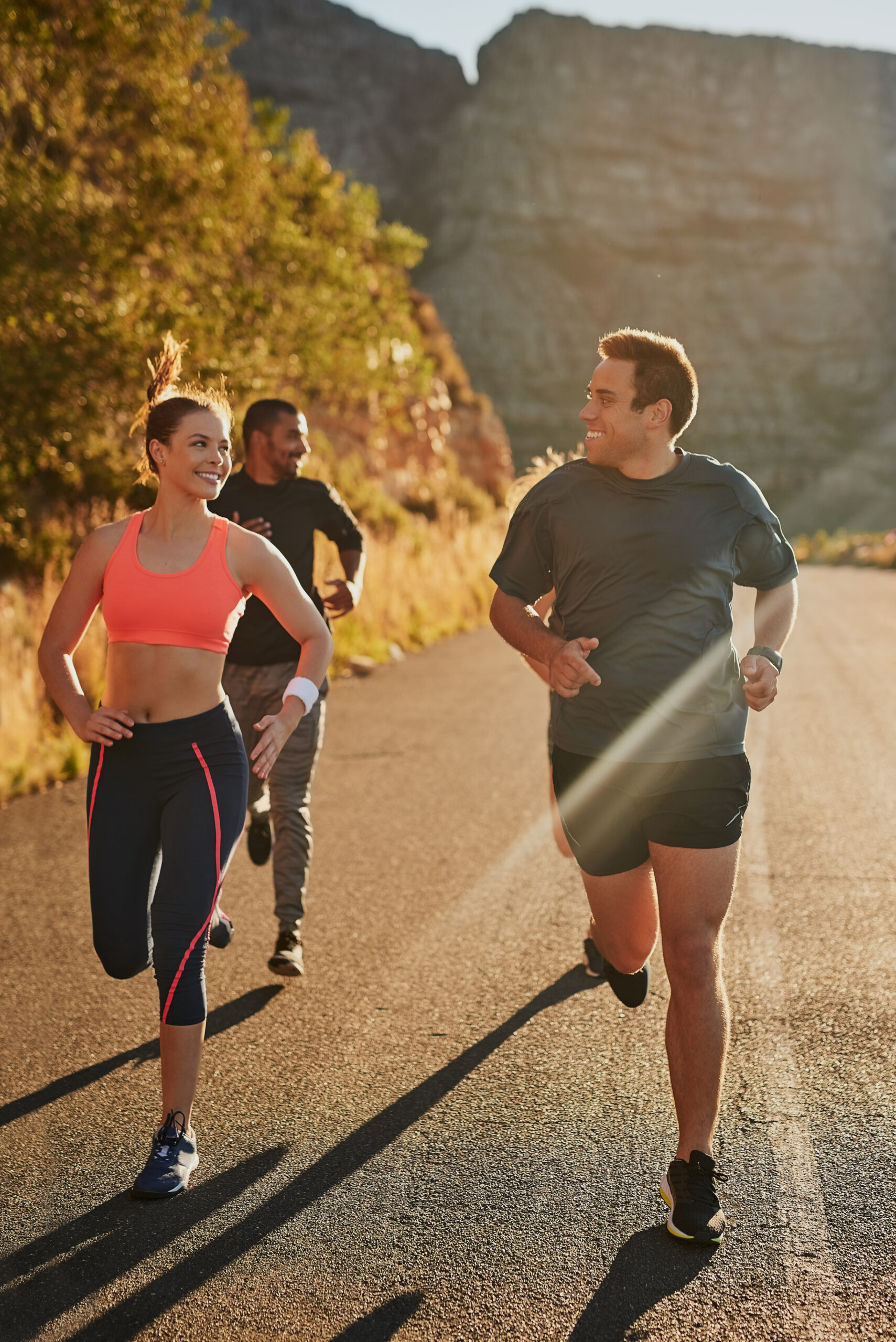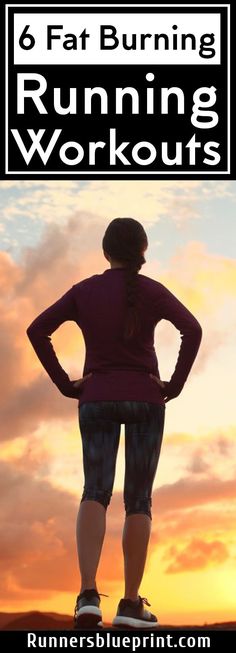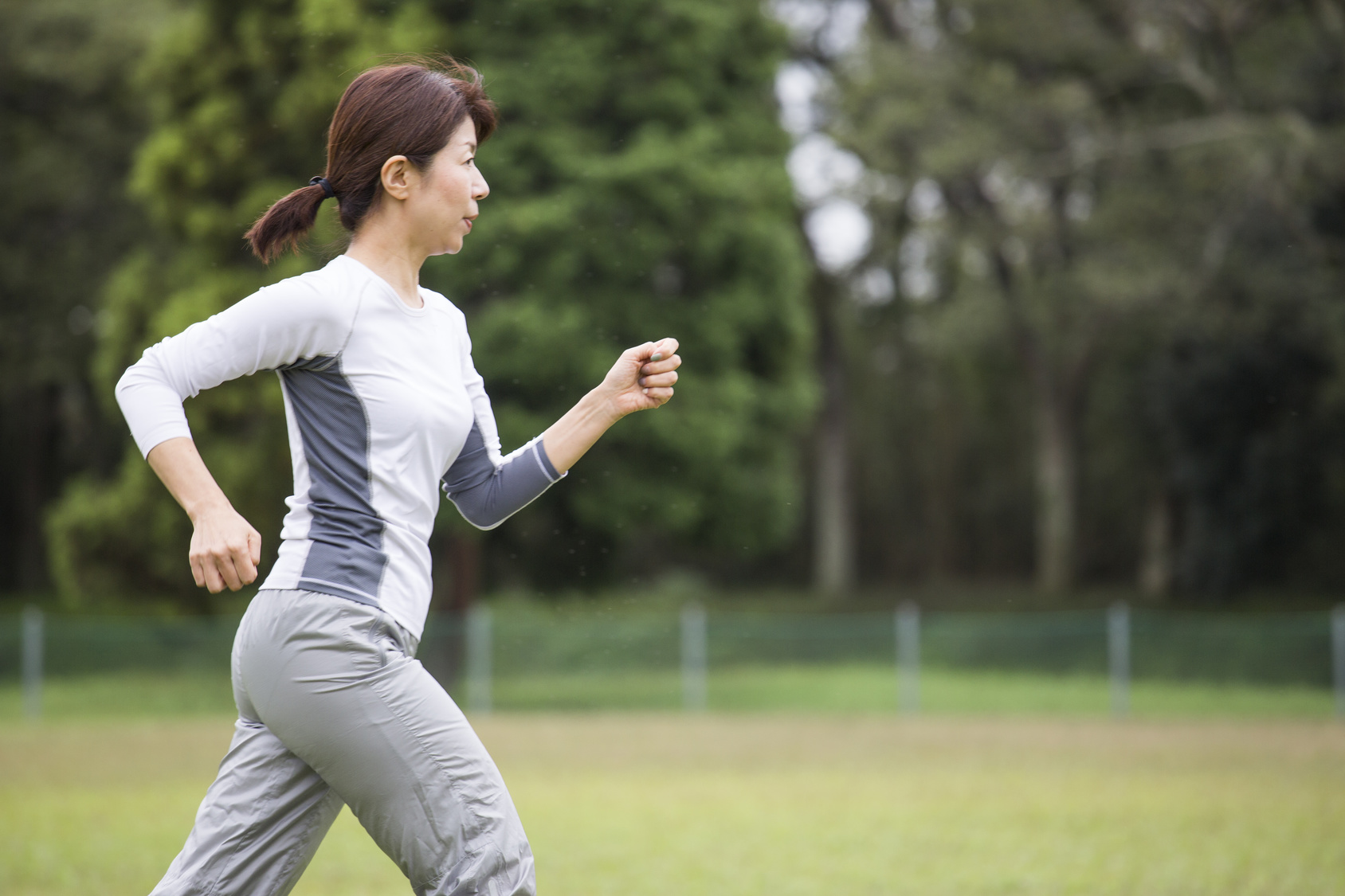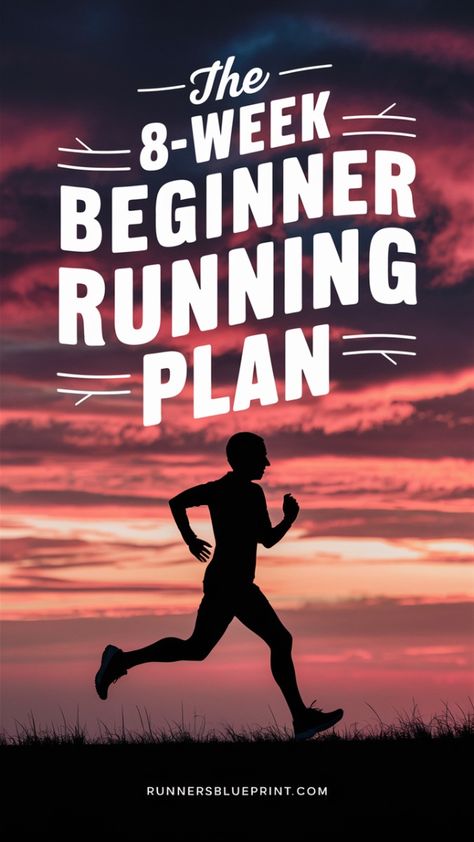Looking for the best post running recovery tips? Then you’ve come to the right place.
Here’s the truth.
Proper recovery after running is a highly important component of any successful training program—whether you are beginner runner or an elite athlete.
See, the truth is, running, sooner or later will take a toll on your body and mind.
Therefore, you NEED a multitude of ways to help you recover properly. Otherwise, you will be risking injuries and painful burnouts.
In other words, you’ll SUCK at running, and you don’t want that, do you?
So what is recovery?
And why is it so god damn important?
Post Running Recovery Defined
According to the dictionary, recovery means “remedy, cure, recuperation,” or that of “act of righting oneself after a blunder, mishap, etc.”.
Therefore, the focus is on restoring the natural order of things.
And this couldn’t be more valuable as when it’s applied to the world of fitness.
What Happens During The Recovery Period?
Although during running is when stimulation for fitness growth occurs, it’s during the recovery period that actual progress is made.
During this period, your body undergoes a number of processes to repair muscle fibers, builds new blood vessels to the damaged areas, and restore homeostasis.
Devoid of workout recovery, none of the training-related positive adaptations will take place.
Without further ado, here are the guidelines you need.
Recovery After Running
When you run, your muscles and tissues are temporarily damaged, your body and mind are fatigued and may crave rest to restore their natural balance.
Not only that, your body also gets dehydrated, and your energy tanks are depleted.
As a result, as a runner, you need to address all of these physical and mental aspects to ensure proper recovery.
In other words, good running recovery is all about achieving the 3 R’s:
- Repairing,
- Resting and
- Replenishing the energy stores.
Proper recovery is all about ensuring that your body has all that it needs to perform these 3 functions after a workout.
This can help you be your best and perform at your best the next time you run (or you do anything in the world since lack of recovery has dire consequences on all facets of life).
The Reasons Running Recovery Is Important
I hate to sound like a broken record , but proper running recovery is what you do to maximize your body’s energy replenishment and repair processes.
It includes stretching, nutrition, hydration, foam rolling, ice therapy, sleep, stress management, compression, etc.
- Your Muscles Need Rest
Every time you run you’re creating microscopic tears in your muscle fibers, and they need time to repair themselves and rebuild.
These micro-injuries are not a problem. They’re how your body adapts to training and becomes stronger and fitter in the process.
The problem is that this rebuilding response only happens when you take time off.
When you cut back on recovery time, the tiny tears continue to break down, and can easily turn into painful injuries.
Letting that happen will erase all the hard work you put in.
The exact recovery time your muscles needs depends on a host of factors, including fitness level, training intensity, and personal differences.
Anything less than a full day of rest each week is going to put your body in the danger zone.
- Avoid Overtraining
I love the energy burst I get from a challenging session, but more running does not always mean more energy.
I learned this the hard way.
The danger of overtraining cannot be overstated.
It causes a drastic drop in performance despite (actually because of) increased intensity and volume of training.
A planned once-a-week recovery day may be all you need to prevent an overtraining episode since it gives your body a chance to rejuvenate.
Err on the side of caution and make sure you’re listening to your body.
If you feel so sore that you dread sitting down, you need to dial it down.
Take as much rest as you feel you need.
If you second guess the message your body is sending, you’ll end up hurt and discouraged.
- Prevents Overuse Injury
Running puts your muscles, joints, ligaments, and soft tissues under an immense load, and sooner or later something is going to snap if you don’t take care of yourself.
In the absence of adequate running recovery between sessions, the body begins to break down in the form of overuse injuries such as stress fractures and Achilles Tendonitis.
You don’t want that.
Rest is crucial in protecting against all sorts of overuse injuries.
These are runners’ worst enemies and can put you out of commission for weeks, even months.
Post Run Recovery – How to Recover From Running
Today, I’m going to share with you at least 10 practical strategies you can do to ensure proper and quick recovery after running.
The tools range from stretching to sleep, ice baths to proper sleep and so on.
By the end of this post, you will have them all.
Just don’t feel overwhelmed.
The fact is, you won’t need to implement all the strategies.
But I strongly urge to put into practice as much as you can with the time and tools you have on hand.
Here we go…
Running Recovery Rule – 1. Cool-down properly
The cool-down marks the transition from running to stretching and other post-run activities, and it’s a must.
In fact, what you do during the cool-down window can significantly speed up or put a halt to your run recovery rate.
Why skipping the cool-down is baaad
Bringing your run to a sudden halt increases the risks of blood pooling and can cause your blood pressure to drop, which can leave you feeling dizzy and disoriented. (Here’s how to prevent feeling dizzy when running)
Nevertheless, allowing for a proper cool-down can efficiently transition blood from the working muscles to the rest of the body.
Plus, you are also risking injury and other problems by stopping on the spot.
As a result, before you shift from running to “normal life” make sure to cool down properly.
Here is how to cool down after a run
Step One: Gradually decrease your running pace and slow it down to an easy jog for nothing less than 5 minutes.
This will help you bring your heart down to normal, and it’s also a great time to reflect on the run.
Step Two: Walk slowly for three to five minutes while taking deep breaths and scanning your body from head to toe, making sure that everything is okay and back to normal.
Step Three: Have a sip of water and jump into your post-run ritual.
For ideas on what to do next, keep on reading.
Also, do five minutes of active recovery after finishing a run.
Do plenty of leg swings and other dynamic exercises for 5 minutes, then go stretch.
Running Recovery Rule – 2. Hydration
When you run, especially if you are doing it the right way, you’re going to sweat.
Sure, sweating is the primary mechanism for keeping core temperature in the healthy range, but it also robs your body of fluids and essential electrolytes that need to be replaced at some point if complete running recovery is to take place.
For that reason, as a runner, you need to develop a post-run hydration protocol that restores the liquids and electrolytes lost during running.
The Human body is 70 percent water.
So, it’s no secret that your body needs water to function.
Here are the main reasons water is crucial for workout recovery:
Transfer of Nutrients
Water helps move nutrients, electrolytes and almost every other substance required for healthy and optimal functioning.
By the same token, when you don’t drink enough water, the delivery of nutrients to your muscles is slowed down, which, in turn, hampers run recovery and can even result in pain and injuries.
Protein Synthesis
Running strengthens your muscles by first breaking them down and then repairing and rebuilding them through muscle protein synthesis.
To kick-start this rebuilding process, your body heavily relies on water.
And here is the bad news.
If you’re dehydrated, protein synthesis can be delayed.
The fact is, if you’re not drinking enough water, your body might even start breaking down muscle tissue.
This can delay post-run recovery, undermine your training performance, and hinder your fitness growth.
Research has revealed that the amount of water within cells has an enormous impact on whether or not muscle breakdown occurs.
In fact, according to a study published in Biochemistry Journal, dehydration may lead to cells shrinking and protein breakdown.
Additional resource – Should I run Today?
Research
Another research published in Journal of Strength and Conditioning Research revealed that trainees who hydrated right after working out showed drastically faster heart rate recovery when compared to subjects who did not hydrate at all following a workout.
Said otherwise, water is a powerful tool in muscle recovery.
So, put it to your advantage.
Other Roles
Other functions of water include:
- Lubricating your joints
- Regulating body temperature
- Removing and detoxifying waste out of your body
- Key for assimilating water-soluble vitamins.
- Etc
I can go and on about the importance of water both for recovery and optimum health, but you get the picture.
How much?
As far as I know, there are no universal guidelines for how much water to drink right after exercise for optimum recovery.
The exact amount will vary from one runner to the next, depending on many factors, including training intensity, sweat rate, clothes worn, the temperature, fitness level, and personal preferences.
As a rule of thumb, to stave off dehydration, you need to keep your body well hydrated by drinking plenty of water throughout the day.
Shooting for anywhere around half of your body weight in ounces of water per day is a good guideline to follow—That’s roughly 8 to 10 8-ounce glasses of water per day.
Also, drink water strategically before, during, and after your workouts.
Additional resource – Can Running Help Cure a Hangover?
Here is how:
Regardless of the intensity and length of your run, always start well hydrated.
Drink enough water in the two to three hours before heading out.
During your runs, especially runs lasting over 45-minute, drink 6 to 8 ounces every 20 minutes.
Upon completing your run, drink at least one to two glasses of water.
If you’re running for longer than 60 minutes, consider a sports drink, or better yet, chocolate milk to replenish your fluids and electrolytes.
To err on the side of caution, drink enough water until you no longer feel thirsty.
Just don’t get me wrong.
Do not over hydrate.
That’s actually as bad as not drinking enough fluids.
Drinking too much water has an adverse impact on your performance overall health.
And you don’t want that.
Additional resource – Ice bath for runners
Monitor Your Hydration Status
Look at your pee.
If your urine color is pale yellow, resembling lemonades, then you’re properly hydrated.
If it’s a darker tint of yellow, then you are improperly hydrated, and might need more fluids.
Additional Resource – Here’s your guide to the Maffetone Method.
Running Recovery Rule – 3. Ice Baths
Used by elite athletes from all fields and backgrounds, the ice bath strategy can help recover after running
Why Ice Baths Are Good For runners
According to theory, ice baths help the nerves, tendon, and muscles to return to their normal state and also allow the vessels to contract and flush away waste and lactic acid buildup.
How to ice bath safely and pain-free
To make the ice bath more tolerable, you don’t want to shock your body with the frigid temperatures.
So instead of plunging straight into an ice bath, make sure at first to allow your body temperature to acclimatize to the coolness of just the cold water, then gradually add the ice into the tub.
Additional reading – How to Prevent Running Injury
Here is a quick 4-step way for a nice ice bath experience:
- Get yourself three to four bags of ice cubes
- Submerge your entire lower body—waist-hip height—in a half-filled tub of cold water with no ice cubes in it yet.
- Add the ice into the tub until the temperatures reach around 60 degrees F
- Stay in the bath for at least 15 minutes. And keep your mind distracted away from the unease of the experience
Anyway, if you can’t tolerate ice bath, or you are not willing to do so, then apply ice packs on mainly aching spots, such as the knees, the calves, and the quads.
Running Recovery Rule – 4. Rest (Active Recovery)
Implementing adequate rest into your training schedule is where the rubber meets the road when it comes to proper running recovery.
Why it matters
The rest period enables the recovery and repair processes to happen at a natural pace.
Therefore, by giving your body the time it needs for recovery, you are setting the stage for a faster recovery rate.
Keep it moving
But proper rest is not all about sitting around the house lying in bed all day, doing nothing.
The best type of rest is what’s known as “active recovery,” which means light exercise that doesn’t put too much stress on the body.
According to research, active recovery stimulates blood flow to the muscles and helps flush out lingering toxins and lactic acid, reducing muscle pain and soreness
Cross-training as active recovery
Active recovery activities include engaging in any other sport that uses up different muscles and joints.
Some of the best activities include recovery runs (light jog), easy biking, swimming, and my favorite, Yoga.
In fact, I think that Yoga is the best active recovery from that there is for runners.
How Much Rest
If you don’t feel like doing any form of active recovery, then rest.
Take a day or two off from running, and do nothing demanding—especially after a hard workout.
How much recovery runners needs?
As a runner, the amount of recovery you need depends on a variety of factors, including your own fitness level, the intensity, and volume of your runs and your own experience.
For example, a beginner runner may need more recovery between relatively easy runs than an elite marathoner who runs 60+ miles per week.
So how can you ensure proper recovery?
Well, read on to discover all the answers you seek.
Running Recovery Rule – 5. Eat for Recovery
The type and quality of the calories you ingest just after a workout—and throughout the day—is going to have a significant impact on your running recovery rate.
The Post-Run Eating Window
During the recovery window, your body is better primed at absorbing nutrients by using carbohydrates to restore muscle glycogen while using amino acids—the building blocks of proteins—to repair muscle tissue.
The speed and efficiency at which your body refuels and repairs itself depend on the nutrition you provide it.
If you skip post-run eating, you’ll not provide your body with sufficient amounts of carbohydrates and proteins for the rebuilding and replenishing processes.
You also need to prioritize healthy eating.
Junk food will only compromise these vital processes, doing more harm than good.
And you don’t want that.
So, what are the main building blocks of a great post-run meal?
The Two Big Players
To meet post-workout needs, as previously stated, carbohydrates and proteins are the main protagonists.
These are what you need for maximum recovery and training efficiency.
As a result, consume a balanced meal within 30 to 60 minutes of your run.
If you don’t have the stomach (or the time) for a full meal, then carry a sports drink, or better yet, milk-based shakes, to sip at the end of your routine.
Shoot for at least one-half gram of carbohydrates per pound of body weight.
The exact amount depends on your fitness level, training intensity, training goals, and personal preferences.
High-quality sources of carbohydrates include vegetables, whole grains, and fruits, bread, pasta, rice and low-fat milk.
Real food, please!
Aim for food that scores high on complex carbohydrates—for replenishing the empty energy tanks—quality protein—for providing your body with the building blocks and essential amino acids for the repair process, and healthy fats—for a variety of functional reasons.
Best Sources
Some of the best complex carbs sources for runners include sweet potatoes, peas, beans, lentils, brown rice, so on.
High-protein foods include eggs, lean meat, and dairy.
Eat also anti-inflammatory foods like cherries and pineapple.
But if your stomach cannot tolerate food so soon after a hard run—that’s my case—then opt for a sports drink or a recovery shake, which is easy on the stomach, and usually more convenient.
The Magical Recovery Simple Shake
One of the best recovery nutrition choices you can make is the chocolate milk.
This wonderful mix of natural sugar and protein can help stock up your energy stores and speed up the rebuilding process.
What’s more?
Chocolate milk does not take that much time to be prepared.
It’s so convenient and time efficient—, especially for the busy runner.
Additional reading – How to Prevent Running Injury
Running Recovery Rule– 6. Sleep Tight
Sleep is the cheapest and maybe most underrated recovery tool you have on hand.
And it’s not rocket science; just old plain sleep.
Why sleep is key?
In my opinion—and something that most performance experts, coaches, and professional athletes agree on—proper sleep makes up at least 70 percent of proper recovery.
Nutrition and proper sleep are the bulk of the good recovery.
Master these two, and you shouldn’t worry about proper recovery.
Here are the main the reasons.
Your Body On The Run
As previously stated, running, and other forms of exercise, breaks muscle fibers down and drains energy levels.
And as you already know by now, fitness growth happens when these tiny micro tears are rebuilt and repaired.
Nevertheless, the rebuilding process can only take full effect while you’re at rest, especially when sleeping.
For that reason alone, getting ample sleep, especially during hard training days and weeks, is the foundation of proper recovery and improved performance.
The Growth Hormone
The main reason sleep is so important for recovery comes down to a particular hormone that’s secreted by the pituitary gland during the non-REM deep sleep stage.
That’s the famous growth hormone.
Also known as HGH, this hormone promotes growth, while assisting in cell regeneration, cell reproduction, and other vital bodily functions in charge of restoring bones and muscles.
Research has shown that sleep deprivation decreases the production of HGH, making it harder for your body to bounce back from runs.
Research
According to a Stanford research published in SLEEP and conducted at the Stanford University, getting enough quality sleep can improve athletic performance in basketball players who maintain a regular sleep routine 10 hours for up for five to seven weeks.
Further, a study by Reyner and Horne revealed that better sleep was tied to a faster sprinting speed and hitting precision in college tennis players.
The Perils of Being Sleep Deprived
If you’re sleep deprived, your body will be unable to complete the natural phases required for muscle repair and recovery.
And that can only spell disaster on your fitness and overall health status.
Further, too little sleep can increase the secretion of catabolic hormones, like cortisol, and hinder the release of anabolic hormones, such as testosterone and insulin-like growth factor, according to research published in Sports Medicine.
What’s more, sleep deprivation is associated with a plethora of health issues including heart disease, obesity, impaired immune function, low productivity, and mental disorders.
So, what’s the ideal amount of sleep per night you need as a runner?
This is a difficult question to answer because, like many other things, the exact amount of sleep needed depends on individual differences.
Sleep needs vary widely by individual, depending in large part on activity level, age, environment, genetics, etc.
The fact is, you might even need different amounts of sleep at different stages of your life and through various stages of your training cycle.
So, when it comes to determining how sleep you need, the best person to turn to is YOU.
In essence, if you still feel tired in the morning, you probably require more sleep.
That said, according to science, people who sleep seven to eight hours a night are healthier and live longer.
So, shooting for somewhere between 7 to 9 hours of high-quality, uninterrupted sleep during the night time is ideal.
Here more sleeping tips.
No heavy eating. Avoid consuming high sugar foods or alcohol watching TV before hitting the sack.
Research shows that this can disrupt our sleep patterns.
Schedule it. Go to sleep and get up at the same time every day, even on weekends.
Sticking to a rigid schedule can help regulate your body’s internal clock, thus making falling asleep, and staying so, easier.
Make a routine. Set up a sleep routine in which you get ready to hit the sack in the 60 minutes before you go to bed.
Make sure that your sleep routine consists of activities that get your body ready to sleep.
Some of these include getting rid of electronics (especially your Smartphone and TV), dimming the lights, meditating, reading fiction, stretching, self-hypnosis, taking a hot shower, and journaling.
Sleep in a cooler environment. Sleep in good temperature that’s roughly 65 degrees and 70 degrees Fahrenheit, or 18 or 19 degrees Celsius.
Add Naps
Power naps are a must since they can help you with recovery and feeling more energized for the rest of the day—especially after a lunch break run. Study suggests that taking a nap around two hours after a run can help your body the body access a deeper and more restorative state of sleep.
Even a 20-minute is better than none.
Just make sure it does not go over an hour; otherwise, you will feeling sluggish afterward, and may even find it hard to fall asleep at night.
Running Recovery Rule– 7. Stretching
Runners are more prone to tightness in the hips, hamstrings, and calves than other athletes.
This tightness can take a toll on performance, and it may also affect recovery and the rate of soreness and tenderness following a workout.
Why do you have to stretch after a run
Lack of a proper stretching routine can increase the risks of feeling stiff and fatigued the day following a hard run.
Well in theory since there no conclusive evidence that proves beyond doubt that post-workout stretching reduces soreness.
But this in my experience, stretching does help.
According to theory, the stretching phase allows the lactic acid—which is the by-product of the muscles during running—to be flushed out into your bloodstream and removed from your body.
How to stretch
The post-run period is ideal for stretching.
Why? During this window, your muscles are warmed up and loose, so the risks of tearing a muscle and injury are pretty slim unless you are overdoing the stretching.
Just don’t get me wrong here.
Feel free to stretch whenever you can—provided that you are well warmed up for the activity.
A proper stretching routine should last between 10 to 20 minutes—depending on how much time you have on hand.
The longer, the better.
Hold the stretches from 30 to 60-seconds, and release any tension and discomfort by gently breathing into it.
What to stretch
Stretch your body thoroughly.
Focus on the main running muscles, like the quads, the calves, hips and hamstrings, and don’t forget your lower back.
If you have any soreness or troubled spot in your body, focus on it, stretch it properly and breathe into it to release the discomfort.
You just don’t want to overdo it.
Stay within the limits of pain.
Don’t force it, otherwise, you may injure yourself, you may tear a muscle, and it’s not worth it.
Do leg drains
After you are done with your stretching routine, do a 5-minute leg drain, or legs over the wall, or Viparita in the yogic circles.
You can do this by lying next to a wall, bringing your butt to the wall your knees into your chest.
Next, straighten your legs and place them straight up on the wall while wiggling your butt closer o the wall.
Running Recovery Rule – 8. Foam Roll
Oh man, when I discovered foam rolling while doing a P90X DVD program, my whole take on post-workout stretching changed drastically.
I’m deeply grateful for Tony Horton, and the guys who came up with the practice of foam rolling.
Why it matters
In my opinion, foam rolling work is really about taking the traditional stretching to the next level.
In fact, in some cases, foam rolling is a more powerful tool than stretching.
Foam rolling can help you alleviate any tightness and knots in your body that tradition stretching can’t even come close to.
Using this wonderful recovery tool also increases tissue repair, enhances mobility and limits soreness, according to a study published in Medicine & Science in Sports & Exercise Journal.
How Foam Rolling Helps
The bulk of post-run soreness and tenderness happens when your muscles and fascia— which is the connective tissue running throughout your body—become entwined and tangled.
But with a simple foam roll routine, you can roll out these troubled areas to remove those knots and tightness.
Just keep in mind that foam rolling is not all sunshine and rainbows.
It can be a real painful experience, especially when you are working diligently on troubled areas.
You will know that you are doing foam rolling right when it’s painful and challenging.
Releasing these knots and troubled areas isn’t (and shouldn’t) be pain-free.
You are straightening out and untangling muscle knots, after all.
Nothing can be more painful than that.
Running Recovery Rule – 9. Limit the pills
Although anti-inflammatory drugs, such as Advil and Aleve can assuage pain and swelling after a hard run, relying on them heavily as a recovery tool is not a really healthy decision.
They are, after all, synthetic drugs.
And drugs are usually up to no good—unless you really need them.
Runners and NSAID usage
Runners especially rely on these non-steroidal anti-inflammatory (NSAID) in cases of increased level of training.
Especially when they are training for a race and when they are pushing their bodies beyond the threshold of pain and discomfort.
The bad news
In spite of offering an instant pain relief effect, NSAID they can hinder recovery— So they are not worth it for the long haul.
Just keep in mind that inflammation and pain following a run can be a natural thing.
And that your body is a lot smarter than you give credit for and it knows what to do to repair itself and recuperate.
When to use NSAID
Use NSAID for acute cases of soreness and pain when you really need the relief.
According to many studies, these drugs can inhibit muscle growth, cause ulcer and a plethora of other health trouble.
But in small and sporadic doses, they don’t pose much health threat.
Just be wary.
There is a fine line.
And once you cross it, these NSAID’s can backfire, leading to serious trouble.
As a result, always consult with your physician—someone who is preferably an active person and knows a thing or two about proper exercise recovery—before you start using them on a regular basis.
And to stay on the safe side, instead of relying on NSAID for relief, do the other recovery tools I shared with you today instead.
Conclusion
I’m well aware that not everyone will have the time needed to perform this routine after every run.
But the more you do of it, the faster you are going to recover between your hard runs and workouts.
In my opinion, this is the ideal recovery plan, but feel free to do and apply what you are able to fit in after each run.
But never forget the three essentials: hydration, refueling, and sleep. These are the backbone, and ignoring them will not only take your running, but it will also take your life quality as well.





